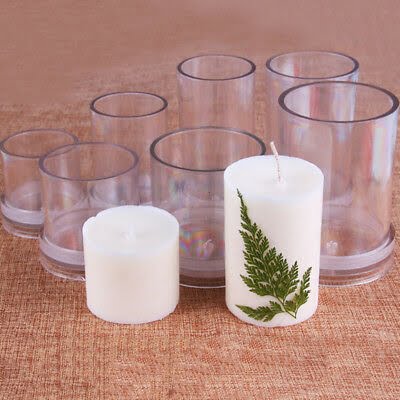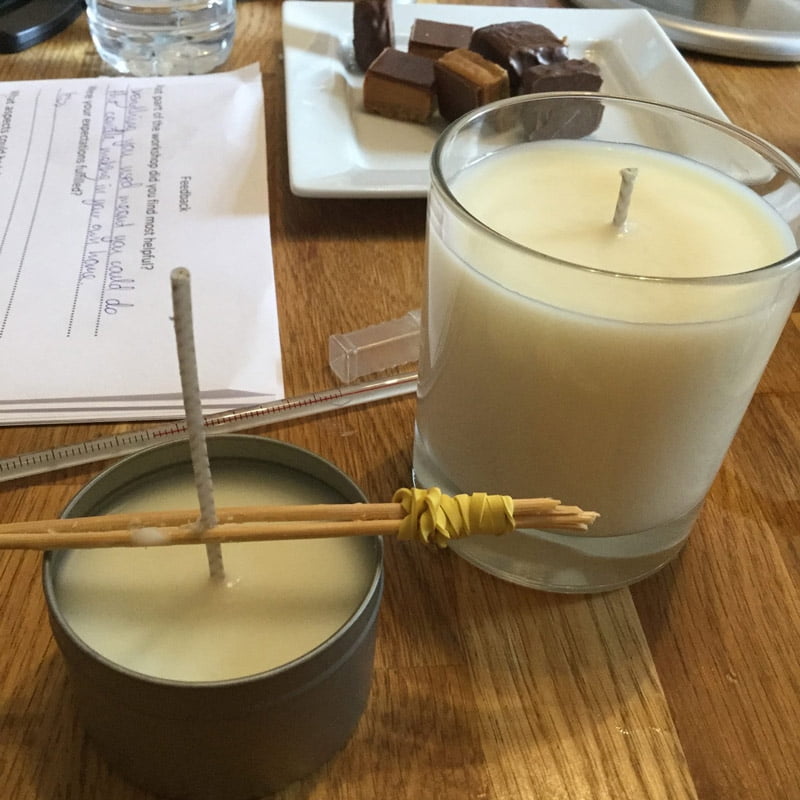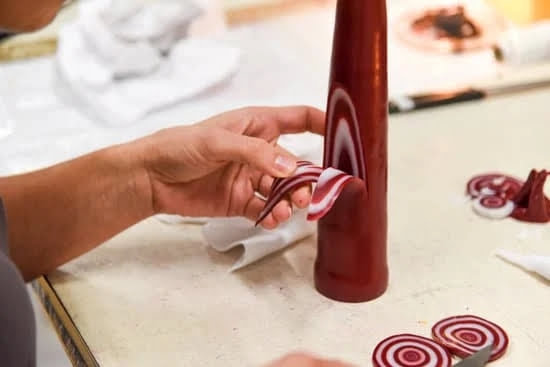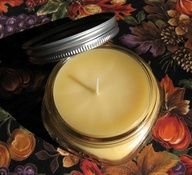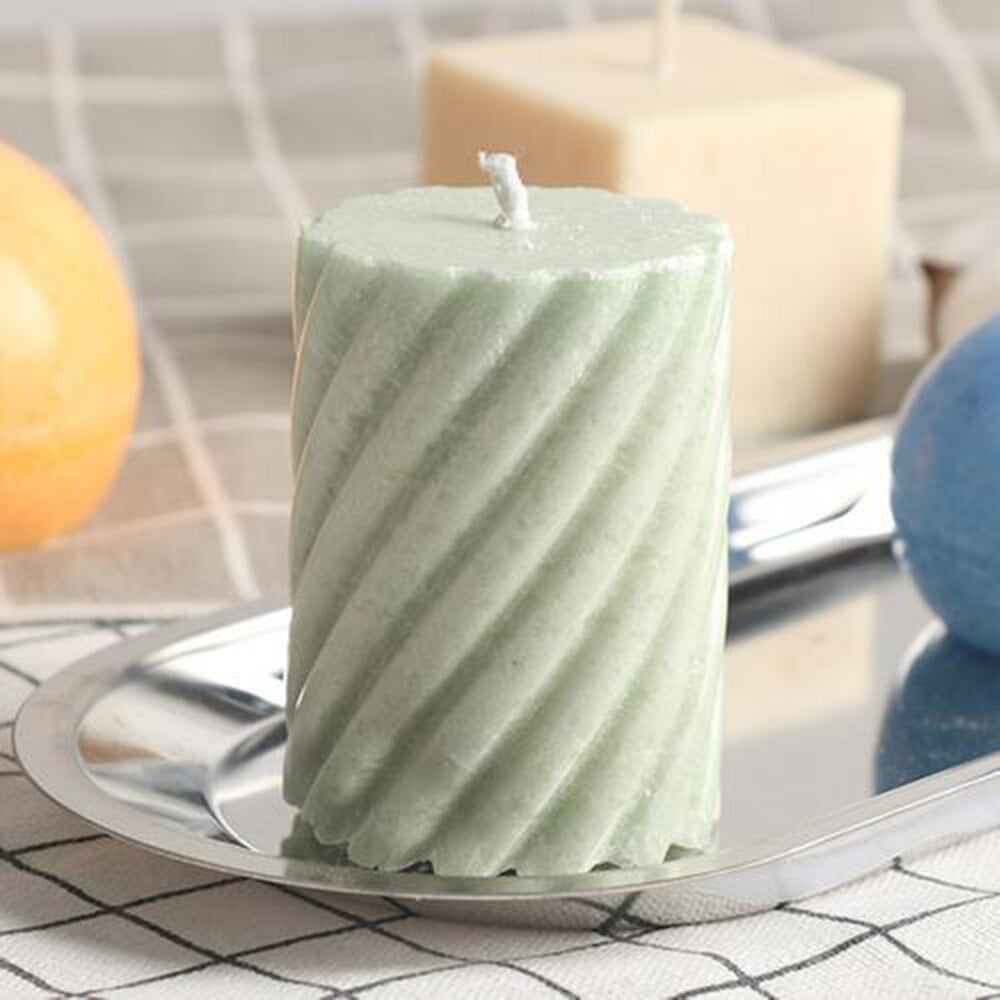Candle making is an art form that requires precision and careful attention to detail. One crucial element in achieving the perfect candle is temperature control throughout the entire process. This is where a thermometer becomes an essential tool for any candle maker. By accurately measuring and maintaining the right temperatures, a thermometer ensures that candles turn out as intended – visually appealing, safe, and with optimal burn performance.
Temperature control plays a significant role in candle making due to the chemical reactions involved in the process. Understanding these reactions and their dependence on temperature is vital to produce high-quality candles consistently. The process begins with melting wax, where reaching and maintaining the correct temperature is critical to obtain a smooth and even texture. Additionally, fragrance blending requires careful consideration of temperature to preserve the scent integrity without compromising safety.
Using a thermometer allows candle makers to achieve the ideal wax melting temperature for different types of wax, whether it be soy, beeswax, or paraffin. Heating wax above or below the recommended temperature range can lead to problems such as poor scent throw or uneven burning. A thermometer allows precise control over this step, ensuring that the wax is heated just enough to fully melt while avoiding overheating or scorching.
Furthermore, when it comes to fragrance blending, maintaining proper temperatures while adding fragrance oils is crucial. Overheating or under-heating these oils can impact both their scent throw and potential hazards associated with them. A high-quality thermometer enables candle makers to add fragrance oils at precisely the right time during the cooling process for optimal results.
Understanding the Science behind Candle Making
Candle making is not just a creative craft, but also a science. To create high-quality candles, it is important to understand the chemical reactions that take place during the process and how temperature affects these reactions. This section will delve into the scientific aspects of candle making and explore the effect of temperature on wax melting and fragrance blending.
When it comes to wax melting, temperature control is crucial. Different types of wax have different melting points, and heating them above or below their recommended temperature range can have consequences on the quality of your candles. For example, if you heat soy wax too high, it can cause discoloration or loss of scent throw. On the other hand, not reaching the proper melting temperature can result in poor adhesion between wax layers.
Similarly, achieving safe and effective fragrance blending requires careful attention to temperature. Adding fragrance oils at the correct temperature allows for optimal dispersal throughout the wax and ensures a consistent scent throw when the candle is burned. Overheating or under-heating fragrance oils can alter their chemical composition and negatively affect both the scent and performance of your candles.
By understanding the science behind candle making, you can make informed decisions about temperature control throughout the process. With a thermometer in hand, you can monitor and adjust temperatures accurately to achieve desired results consistently. Whether it’s melting wax, blending fragrances, dyeing candles, determining pouring temperatures, or ensuring even-burning candles through proper cooling; a thermometer becomes an essential tool in your candle making arsenal.
Achieving Proper Wax Melting Temperature
When it comes to candle making, achieving the proper wax melting temperature is crucial. The melting temperature of different types of wax can vary significantly, and heating the wax at the correct temperature range is necessary to ensure a successful and high-quality end product.
Ideal Temperature for Melting Different Wax Types:
It is essential to understand that different waxes have different melting points. For example, soy wax typically melts around 110-120 degrees Fahrenheit, whereas beeswax has a higher melting point at around 145-150 degrees Fahrenheit. It is crucial to consult the specific instructions provided by the wax manufacturer for their recommended melting temperatures.
Consequences of Heating Wax Above or Below Recommended Temperature Range:
Heating the wax above or below the recommended temperature range can lead to various issues in the candle making process. If the wax is heated too high, it can result in discoloration, degradation of fragrance oils, and even a potential fire hazard.
On the other hand, if the wax is not heated enough, it may not fully melt or mix properly with any added colorants or fragrance oils. This could cause uneven burning and poor scent throw in the final candles.
To ensure that you achieve proper wax melting temperature every time, using a reliable thermometer specifically designed for candle making is essential. A thermometer allows you to monitor and control the heat accurately for better consistency and quality in your candle-making process. By using a thermometer, you can avoid potential mistakes caused by inaccurate temperature control and create beautiful candles that burn evenly and release their fragrances effectively.
Achieving Safe and Effective Fragrance Blending
Fragrance plays a crucial role in candle making, as it adds both aesthetic appeal and a pleasant aroma to the finished product. However, achieving safe and effective fragrance blending requires careful attention to temperature control.
Improper temperature management during the fragrance blending process can lead to issues such as the loss of scent or even potential hazards. In this section, we will discuss the importance of adding fragrance oils at the correct temperature and highlight the potential dangers of overheating or under-heating fragrance oils.
The Importance of Adding Fragrance Oils at the Correct Temperature
Adding fragrance oils to melted wax too early or too late in the candle making process can have negative consequences. If added too early, when the wax is still too hot, some volatile components of the fragrance oil may evaporate, leading to a loss of scent strength in the finished candle.
On the other hand, if fragrance oils are added when the wax has cooled down significantly, there is a risk that they may not blend properly with the wax and result in poor scent throw.
To ensure proper blending and maximize scent retention, it is recommended to add fragrance oils to melted wax at a specific temperature range. This range typically falls between 175°F (79°C) and 185°F (85°C), but it may vary depending on the specific type of wax being used or manufacturer recommendations. Using a thermometer allows candle makers to monitor and maintain precise temperatures during this critical step.
Potential Dangers of Overheating or Under-heating Fragrance Oils
Overheating or under-heating fragrance oils can also pose safety risks for candle makers. Overheated fragrance oils can become more volatile and potentially combustible, increasing the risk of fire. Additionally, high temperatures may cause fragrances to break down or change composition, resulting in unpleasant odors when burned.
On the other hand, under-heated fragrance oils may not blend properly with the wax, leading to clumping or separation within the candle. This can affect both the appearance and scent throw of the finished product. Moreover, using fragrance oils at temperatures lower than recommended can result in a weaker scent throw, making the candle less appealing to customers.
Preventing Temperature-Related Candle Defects
Proper temperature control is crucial in candle making to avoid various defects and ensure the creation of high-quality candles. Without accurate temperature monitoring, candle makers may encounter common issues such as sinkholes, frosting, and cracking. However, by using a thermometer throughout the candle making process, these problems can be prevented.
Here are some of the common candle defects caused by improper temperature control:
- Sinkholes: Sinkholes occur when there is uneven cooling during the curing process, resulting in a depression or hole in the center of the candle. This defect is often caused by pouring wax at a temperature that is too low or adding fragrance oils that are too cool. To prevent sinkholes, it is important to use a thermometer to ensure the optimal pouring temperature and to add fragrance oils at the recommended temperature.
- Frosting: Frosting refers to the white crystalline pattern that appears on the surface of candles, resembling frost. It occurs due to temperature fluctuations during cooling and can impact the aesthetic appeal of the finished candle. By monitoring and controlling cooling temperatures with a thermometer, candle makers can minimize frosting and achieve a smooth surface.
- Cracking: Excessive heat can cause candles to crack as they cool down. This commonly happens when candles are exposed to sudden changes in temperature or when improperly heated wax is poured into containers. To avoid cracking, it is essential to heat wax within the recommended range and allow it to cool gradually at an appropriate rate.
By using a thermometer throughout the candle making process, these temperature-related defects can be significantly reduced or even eliminated completely. A thermometer allows precise control over melting temperatures, blending fragrances at optimal warmth, determining pouring temperatures accurately, and monitoring cooling rates effectively.
Dyeing Techniques and Temperature Control
The process of dyeing candles involves adding color dyes to the melted wax to create vibrant and visually appealing candles. However, achieving the desired color intensity and even distribution requires careful temperature control. This section will discuss the impact of temperature on candle color dyes and explore different dyeing techniques along with their temperature requirements.
Temperature plays a crucial role in candle dyeing as it affects the dissolution of the color dyes and their dispersion within the wax. To achieve optimal results, it is essential to heat the dye and wax mixture to a specific temperature range that varies depending on the type of colorant used. For example, liquid dyes usually require a lower temperature range compared to powdered dyes.
Different dyeing techniques also have their own temperature requirements. One popular technique is called dip-dyeing, where a partially cooled candle is repeatedly dipped into a container of colored wax. This technique requires maintaining a consistent dipping temperature to ensure even coverage and prevent layer separation.
Another technique is called marbling, where multiple colors are swirled together within the candle using various tools or techniques like spoon swirling or skewer dragging. To achieve successful marbling, it is important to work with the melting wax at an optimum temperature that allows for easy manipulation without causing excessive blending.
In summary, mastering dyeing techniques in candle making requires careful attention to temperature control. Choosing appropriate temperatures for melting wax, selecting suitable dye types, and following specific techniques are all factors that contribute to achieving beautiful and well-colored candles.
| Dyeing Technique | Temperature Range (°F) |
|---|---|
| Dip-Dyeing | 120-140°F |
| Marbling | 135-150°F |
| Layering | 125-135°F |
Using a Thermometer to Determine Cooling and Pouring Temperature
Using a thermometer to determine the cooling and pouring temperature is a crucial step in candle making. By monitoring the temperature throughout the process, you can ensure that your candles turn out smooth, even-burning, and free from defects.
When it comes to pouring wax into containers, it is important to know the optimal temperature at which to do so. If the wax is too hot, it can cause the container to crack or shatter. On the other hand, if the wax is too cool, it may not adhere properly to the container and create uneven burning. This is where a thermometer becomes an essential tool.
To determine the ideal pouring temperature, different types of waxes have different temperature requirements. For example, soy wax typically has a recommended pouring temperature range of 120-150 degrees Fahrenheit (49-66 degrees Celsius), while paraffin wax has a range of 160-180 degrees Fahrenheit (71-82 degrees Celsius). By using a thermometer and closely monitoring the temperature during melting and cooling stages, you can achieve optimal results with your chosen wax.
In addition to determining pouring temperature, monitoring cooling temperature is equally important in achieving high-quality candles. After pouring the wax into containers, you need to let them cool and solidify before trimming the wick and using them. Cooling too quickly or too slowly can result in visible defects such as sinkholes or frosting on the surface of the candle.
Having a thermometer allows you to track and adjust cooling conditions as needed. Most candle makers recommend allowing candles to cool slowly at room temperature for optimal results. By keeping an eye on the cooling temperature with a thermometer, you can make adjustments like moving candles away from drafts or adjusting room temperature settings if necessary.
By using a thermometer to determine both cooling and pouring temperatures, candle makers can achieve consistent results with every batch they create. Monitoring these temperatures helps maintain quality control by ensuring that candles are poured at their optimal state and cooled under the right conditions. The result is a professional-looking candle with a smooth finish and even burn, adding to the overall craftmanship and satisfaction of candle making.
| Type of Wax | Recommended Pouring Temperature Range |
|---|---|
| Soy Wax | 120-150°F (49-66°C) |
| Paraffin Wax | 160-180°F (71-82°C) |
Benefits of Using a Thermometer for Candle Making
Using a thermometer is essential for achieving optimal results in candle making. Temperature control plays a crucial role throughout the entire candle making process, from melting the wax to blending fragrances and determining pouring temperature. By using a thermometer, candle makers can ensure that their candles turn out exactly as desired, with consistent quality and safe burning properties.
One of the key benefits of using a thermometer in candle making is the ability to achieve proper wax melting temperature. Different types of wax have specific temperature ranges at which they should be heated to ensure complete melting and smooth consistency.
Without accurate temperature control, the wax may not fully melt or can reach temperatures that are too high, leading to issues like uneven texture or discoloration. By monitoring the wax temperature with a thermometer, candle makers can achieve the ideal melting point for their specific type of wax, resulting in better quality candles.
In addition to ensuring proper wax melting temperature, a thermometer is also crucial when it comes to fragrance blending. Fragrance oils need to be added at specific temperatures in order to properly combine with the melted wax and retain their scent strength.
If fragrance oils are added at temperatures that are too low or too high, it can affect the overall performance and fragrance throw of the finished candle. By using a thermometer to measure and maintain the correct temperature range for adding fragrance oils, candle makers can prevent potential issues such as weak scent throw or fragrance oil separation.
Overall, using a thermometer provides numerous benefits for candle makers. It allows for precise control over temperature throughout each step of the candle making process, ensuring consistent results and avoiding common defects caused by improper temperature control.
Moreover, by investing in a quality thermometer designed specifically for candle making purposes, crafters can enhance their overall experience by achieving improved quality and safety in their candles. Whether you are an experienced chandler or just starting out on your candle making journey, using a thermometer will undoubtedly elevate your candle crafting skills and help you create candles that impress.
Conclusion
In conclusion, a thermometer is a crucial tool for anyone serious about candle making. By understanding the science behind candle making and the importance of temperature control, you can achieve optimal results in your craft. From proper wax melting temperature to safe fragrance blending and preventing temperature-related defects, a thermometer helps ensure consistency and quality in your candles.
One of the key benefits of using a thermometer is achieving the ideal wax melting temperature. Different wax types have specific melting points, and heating them above or below the recommended range can lead to subpar results. A thermometer allows you to monitor the temperature accurately and ensures that the wax melts evenly and thoroughly.
Additionally, fragrance blending requires precision when it comes to temperature. Overheating or under-heating fragrance oils can affect the scent throw of your candles. With a thermometer, you can add fragrance oils at the correct temperature and avoid any potential dangers associated with improper heating.
Furthermore, using a thermometer helps prevent common candle defects caused by improper temperature control. Sinkholes, frosting, and cracking are just some of the issues that can arise from incorrect temperatures during various stages of candle making. By consistently monitoring the temperature with a thermometer, you can minimize these defects and produce professional-looking candles.
Frequently Asked Questions
Can you make soy candles without a thermometer?
It is possible to make soy candles without using a thermometer, but it may not yield the best results. A thermometer is a valuable tool in candle making because it helps ensure that the wax is heated to the correct temperature for pouring. Soy wax has a specific melting and pouring temperature range, typically between 120°F to 180°F (49°C to 82°C).
If the wax is not heated within this range, it may result in poor fragrance throw, uneven burning, or other issues with the finished candle. While it is technically possible to guess or estimate the temperature without a thermometer, using one will provide more accurate and consistent results.
Why is the temperature of wax so important?
The temperature of wax plays a crucial role in the candle-making process because it affects various aspects of the final product. First and foremost, heating the wax to its proper melting point ensures that it transforms into a liquid state and becomes ready for pouring into candle containers or molds. Additionally, maintaining the right pouring temperature allows for optimal fragrance dispersal in scented candles and helps prevent “sweating” or excessive oil separation within the candle.
Moreover, controlling the cooling process by monitoring the temperature helps determine factors like fragrance throw, burn time, and overall quality of the finished candle. In summary, paying attention to wax temperature ensures desirable outcomes and consistent performance in candles.
Can you use a food thermometer for candle making?
Yes, you can use certain food thermometers for candle making if they meet certain criteria. Candle making typically requires a thermometer with a wide temperature range suitable for measuring elevated temperatures since melted wax needs to reach specific temperatures for proper handling and mixing with dyes or fragrance oils. While many food thermometers are designed for lower-temperature cooking applications like meat or candy making, there are specialized food thermometers available that can withstand higher temperatures required for candle making.
It’s essential to read the specifications of any food thermometer before using it for candle making purposes to ensure its accuracy and suitability for measuring wax temperatures. Additionally, it’s advisable to designate a thermometer solely for candle making to prevent cross-contamination with food items.

Welcome to my candle making blog! In this blog, I will be sharing my tips and tricks for making candles. I will also be sharing some of my favorite recipes.

